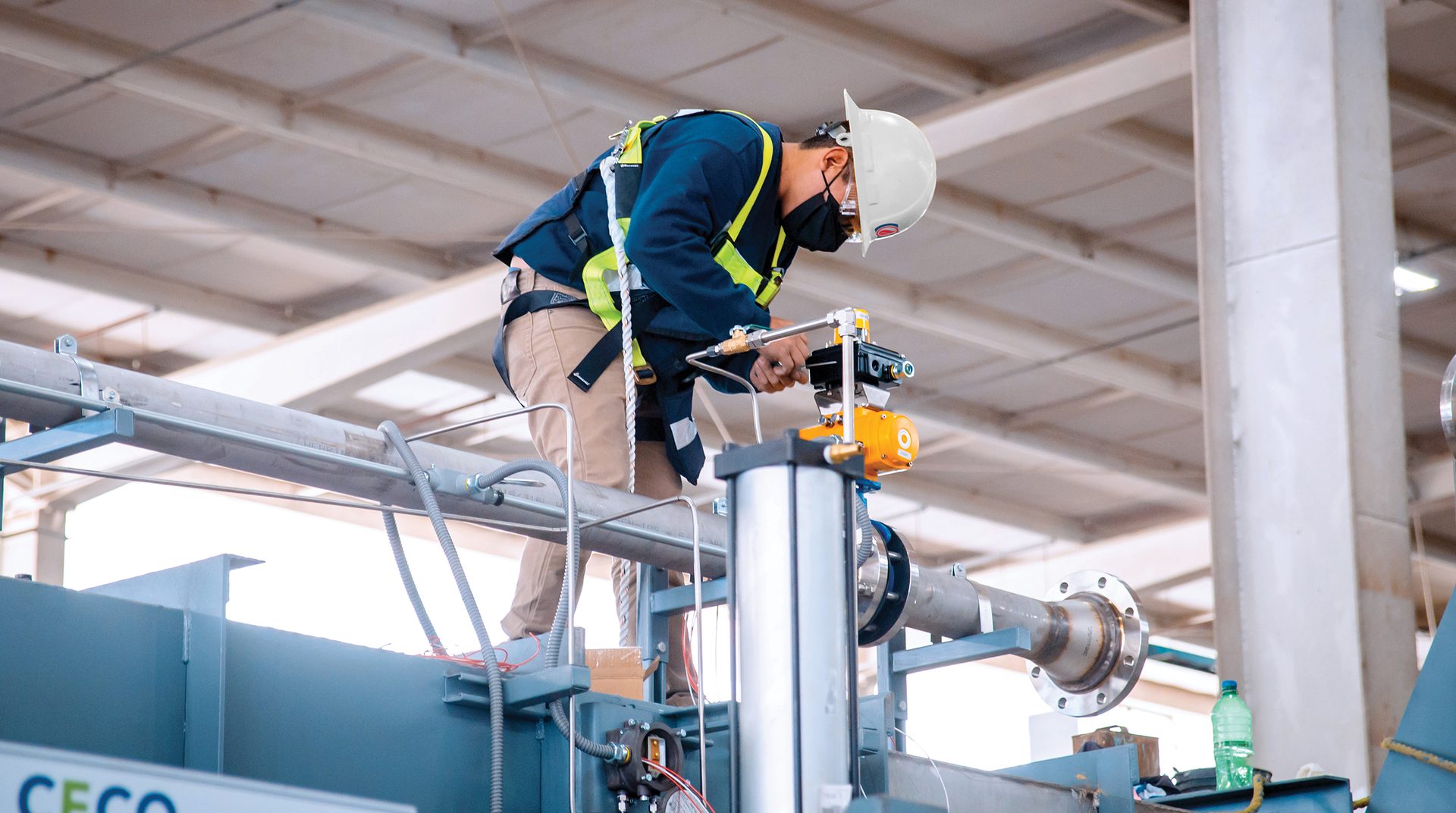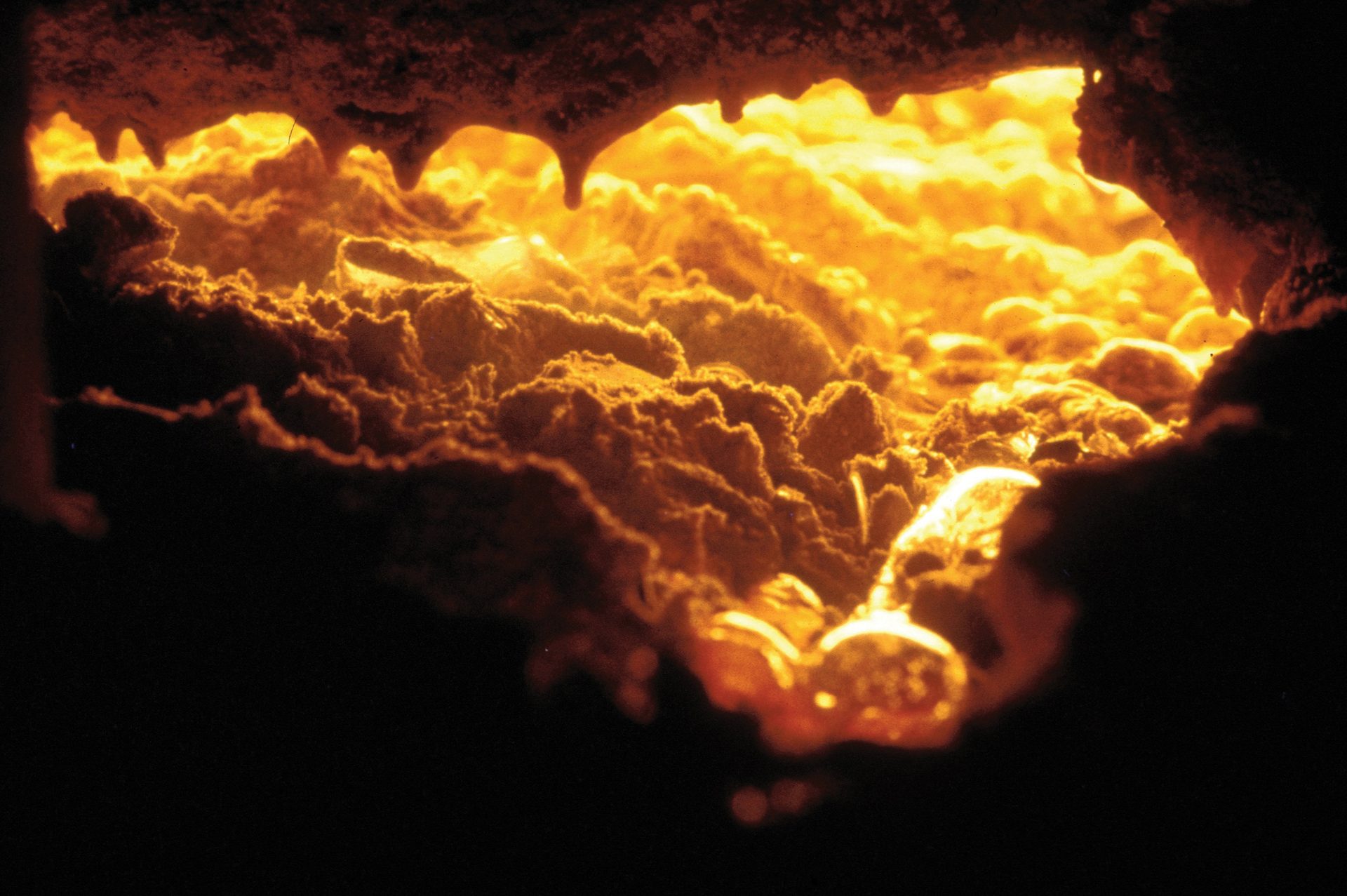
The fire within:
Trends in furnaces focused on lower emissions and costs
By David Holthaus
The heart of nearly any ceramic or glass production is the furnace, where raw materials are treated with such intense heat that they are transformed into stable, durable, new products. Space shuttle tiles, hip implants, automobile windshields, refractory bricks, and bathroom fixtures must first pass through the fire before they are ready for use.
While the fundamental principles of high-temperature firing remain constant, the methods and equipment employed to carry out the process continue to evolve in response to shifting labor, environmental, and economic conditions. Manufacturers have continued to innovate to meet sustainability goals, reduce energy consumption, and improve the quality of their products.
ADVERTISEMENT
Nutec Bickley is a furnace maker based in Santa Catarina, Mexico, whose customers include large, advanced ceramic manufacturers. The company manufactures industrial kilns used for refractories, technical ceramics, sanitaryware, electrical insulators, and other products.
Several of the company’s biggest customers have committed to transforming their operations over the next two to three decades to become carbon neutral, says Alberto Cantu, vice president of sales. It is a coming transformation that will undoubtedly change their firing processes and fuel sources.
“We are definitely going to see less natural gas in the future,” Cantu says.
Moving away from natural gas as a primary fuel is a long-term prospect that will depend on economics and advances in technology.
In the near-term, companies are taking other steps to improve energy efficiency.
For example, Nutec Bickley recently installed a 125-meter-long tunnel kiln for an advanced ceramics manufacturing client that produces ceramic cores used in the aerospace industry. The kiln was designed to work year-round at an operating temperature of 1,200°C. Its combustion system uses air traveling back through the tunnel kiln to mix with fuel gas injected through the burners. The system is expected to produce cost savings and a payback period of two years or less, Cantu says.
Manufacturers are increasingly converting their furnace operations to electric to reduce the emissions from their production processes. Cantu says he is seeing conversions in cases where firing takes place in lower temperature regimes at or below 600°C.
“The easiest thing to do is to change everything in your operation to electric,” he says.
As a result, his company has seen a surge in the demand for electric kilns.
“We’ve made more electric kilns in the last four years than in the previous 40,” he says.

A Nutec Bickley engineer completes a furnace installation.
Credit: Nutec Bickley
The conversion to electric can come with tradeoffs, says Doug Jeter. He is director of sales and marketing for Harrop Industries, a Columbus, Ohio-based maker of custom-designed industrial kilns and ovens. Firing with natural gas can mean more uniform and consistent end products, he says.
“Our customers are mostly concerned about a quality product,” he says. “With natural gas you get a lot of mixing in the kilns, and heat transfer can be better.”
To aid in product uniformity, Harrop built one of the first large-scale kilns using microwave assist technology.
“The bigger your product gets, the harder it is to heat everything uniformly from the outside,” Jeter says. “Just like a microwave at home, it heats from the inside out. The benefit is in potentially more uniform firing.”
Electric firing could be prone to losing power, which could result in an expensive loss of product, he points out.
“Gas tends to be very reliable,” he says.
Natural gas is also relatively inexpensive in the U.S., and, depending on the source of the electric power, converting to electric may not provide the environmental benefits it promises.
“Emission from your stacks may go down, but if the electricity is generated by coal, it’s still a carbon emission,” he says.
O-I Glass, the Perrysburg, Ohio-based glass maker, is sticking with gas at its new plant in Kentucky on which it broke ground in April 2023. The Bowling Green plant is the first O-I facility built to use the company’s MAGMA technology at full-scale.
MAGMA stands for Modular Advanced Glass Manufacturing Asset. It is a flexible production system that the company says will allow it to respond more quickly to customer needs and emerging markets.

A Nutec Bickley engineer monitors temperature gauges and internal pressure.
Credit: Nutec Bickley
The MAGMA melter is about a third of the size of a traditional furnace, and its smaller size will allow the addition of more lines as markets grow, or to permit the company to enter new markets, O-I Glass says.
Unlike a traditional furnace, the MAGMA melter can be moved and redeployed to be closer to customer filling lines, the company says. Its size also allows for smaller production runs and adaptability to product changes.
The glassmaking giant piloted the technology at its plants in Streator, Illinois, and Holzminden, Germany. The first phase of construction for the Kentucky facility is expected to be complete in mid-2024, the company says.
While gas remains a reliable and economical fuel source, more companies, particularly those in Europe, are converting their operations to different fuel sources. Hornberg, Germany-based Duravit AG in July 2023 announced that it is building what it called the world’s first climate-neutral ceramic production facility. The plant is being built in the Canadian province of Québec and will be the company’s first production site in North America.
For the firing process, Duravit will use an electric roller kiln powered by electricity from hydropower. The technology will save 11,000 tons of CO2 per year compared to a conventional ceramic factory, the company says. The maker of ceramic sanitaryware says the plant is expected to begin production in 2025. The kiln and related equipment are being provided by SACMI, the Imola, Italy-based machine maker.
In Germany, Ardagh Group is nearing completion of a hybrid furnace that will use 80% renewable electricity and 20% gas. Ardagh says the new furnace will invert the current fuel mix of its container glass production, which is a blend of approximately 90% gas and 10% electricity. The new hybrid technology, which the company calls its NextGen Furnace, will reduce CO2 emissions by as much as 60% in the furnace. The Luxembourg-based maker of glass bottles operates 65 metal and glass production facilities in 16 countries, employs more than 21,000 people, and reports sales of approximately $10 billion.

Inside a glass melting tank, where temperatures reach 1,700°C.
Credit: Schott
There is also a trend toward incorporating more automation in furnace technology, Jeter says. Newer furnaces are equipped with sensors and control systems that enable real-time monitoring and adjustment of temperature, atmosphere, and other parameters, improving process control, reducing downtime, and improving the consistency of the products.
Manufacturers are seeking ways to control their processes remotely, either from a booth in the plant or from their mobile phones. Increasing automation minimizes the demand for labor and the need for manual intervention, he says, which can help as businesses try to navigate the nationwide shortage of trained specialists.
The leading edge of furnace technology may be the experiments in using hydrogen as a fuel. Research into whether hydrogen can be used consistently as a fuel and how it might affect the products has been under way.
Jeter says his company has not had any firm inquiries about building a kiln using 100% hydrogen as fuel. Cantu says he is skeptical about the promise of hydrogen as major challenges exist to its adoption.
But major manufacturers have invested in pilot projects. In July 2023, the Schott group announced it had succeeded in producing a test melt using 100% hydrogen. The test was a leap forward from its tests conducted 2022, in which 35% hydrogen was added to a melting tank that had previously been operated exclusively with natural gas.
“For the first time, we succeeded in completely using hydrogen for a holding time of 10 days on a laboratory scale,” says Matthias Kaffenberger, melting technology manager at the Mainz, Germany-based glass maker.
In December 2022, Encirc, the U.K.-based glass manufacturer, and Diageo, the spirits giant responsible for Smirnoff, Johnnie Walker, and many other brands, announced a partnership to create the world’s first net-zero glass bottles at scale by 2030. An ultralow carbon hybrid glass furnace at Encirc’s plant in Elton, England, is expected to begin glass production in 2027. By 2030, the partnership expects to produce up to 200 million net zero bottles of Smirnoff, Captain Morgan, Gordon’s, and Tanqueray per year.
The companies say the furnace will reduce carbon emissions by 90%, with an energy mix of green electricity and low-carbon hydrogen. It is expected that carbon-capture technology will harness the remaining carbon emissions by 2030. The furnace will be powered by zero-carbon electricity and hydrogen from a nearby plant.
The expanded hydrogen supply at the Mainz plant enabled the longer test and solved one of the biggest challenges in hydrogen firing.
“The real issue is: what is your source of hydrogen?” Jeter says. “Where are you going to get hydrogen at a regulated pressure and a regulated flow and enough of it to heat your kiln?”
Schott officials also point out that green hydrogen produced from renewable energy is not yet available in sufficient quantities largely due to the lack of an extensive infrastructure for an industrial hydrogen supply.
“We urgently need to take further steps and come up with timely solutions for a functioning infrastructure,” says Jens Schulte, a member of the Schott board of directors.
But the trend toward carbon neutrality is expected to move forward, as companies continue to make long-term commitments to making their operations more environmentally friendly. Many observers say they expect to see a mix of technologies, including carbon capture, be used in the efforts.


